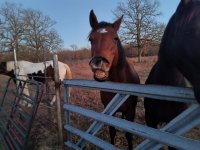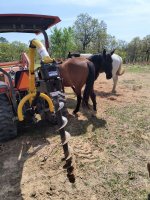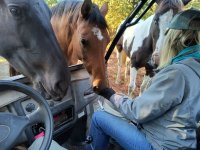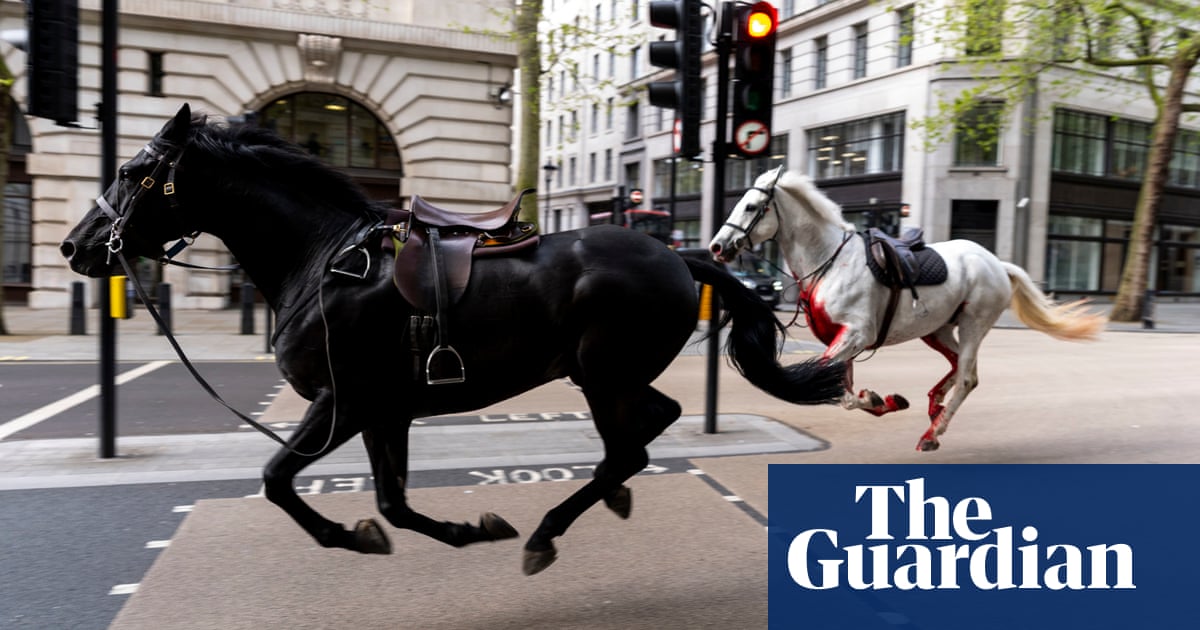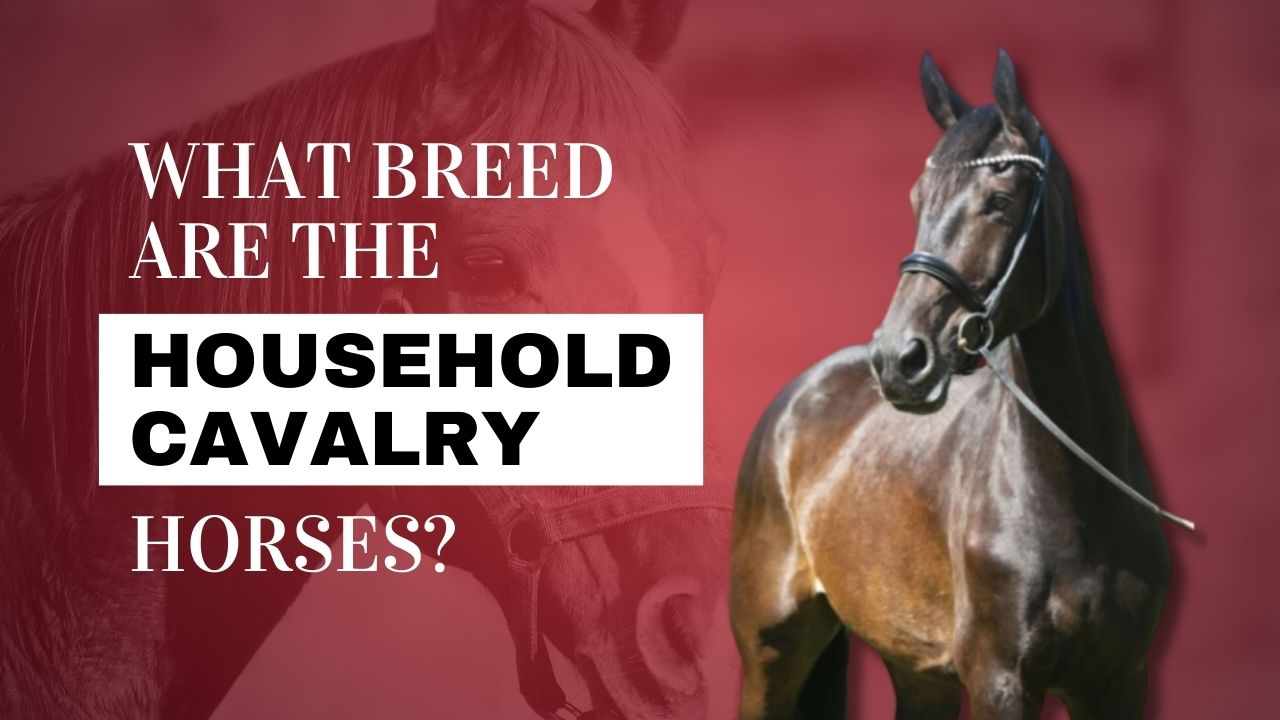I stumbled upon this while looking for news of the injured horses this morning. Thought it was interesting.
What Breed Are The Household Cavalry Horses?: A Royal Equestrian Affair
By
Graham Skinner
September 1, 2023
Updated December 12, 2023
Unveiling the noble heritage of Household Cavalry Horses; everything from breeds, history and the traditions that personify royal ceremonies.

www.strathornfarm.co.uk
Picture this: You’ve joined the throngs in London to witness first-hand the iconic
Trooping of the Colour ceremony.
Surrounded by devoted subjects of the Sovereign, you eagerly await the commencement of the royal procession, filled with anticipation, during the King’s Birthday Parade.
As the Household Cavalry Mounted Regiment takes centre stage at Horse Guards Parade you’re transported to a bygone era, steeped in a tradition of regal elegance and military excellence. But you can’t help but wonder: What breed of horse are you staring at?
In this article, we unveil the majestic breeds that grace these special events of the British Monarch, exploring the unique characteristics and rich history behind The Household Cavalry Regiment.
Join us as we gallop through the royal equestrian world, filled with pomp and ceremony (and beautiful horses!) and you can believe us when we say: this article is “straight from the horse’s mouth!”
What Is The Household Cavalry?
The History
The Household Cavalry is a union of esteemed Life Guards and Blues and Royals regiments of the British Army. It represents the epitome of military tradition and honour. Just as the powerful steeds used to carry these soldiers onto the battlefield, they also bear the weight of history and pageantry during ceremonial events.
For better understanding, the Blues and Royals regiment of the British Army was formed by joining together the Royal Horse Guards and the Royal Dragoons (Red Dragoons).
Both regiments have a
long history steeped in virtue and tradition. The Red Dragoons, also known as the 1st Dragoons, were originally formed as a cavalry regiment with expertise in mounted tactics and adaptability on the battlefield. The Red Dragoons are one of the founding components of the current regiment we see today.
The
Life Guards, established in the 1600s, were formed as the royal bodyguard unit that served as the
loyal protectors of King Charles II during his exile. They played a key role in his return to England for the restoration in 1660. The Life Guards, also known as the Household Cavalry, hold a prestigious position as being one of the oldest regiments in the British Army.
With their distinctive red tunics and white plumes, the Life Guards personify tradition and honour. They stand as a beacon for their enduring legacy in the United Kingdom that showcases the
grandeur of the British monarchy.
Essentially, The Household Cavalry coalition is the combination of the
two most senior regiments in the British Army, both with a long and distinguished history (as mentioned before). It’s divided into two parts: The Household Cavalry Regiment and The Household Cavalry Mounted Regiment.
Note: The Household Cavalry Mounted Regiment is responsible for ceremonial occasions and public displays. The Household Cavalry Regiment is the operational unit, specialising in armoured resistance and serving as an active combat force. “Royals Trooper” is the name given to skilled soldiers who form part of the Life Guards and Blues and Royals regiments.
So, whether it’s the daily King’s Life Guard or Royal Horse Guards at prestigious events like Trooping Of The Colour and the State Opening Of Parliament; these two most senior regiments are trained in both horsemanship and parade preparations. They proudly serve as
ambassadors of the Crown, the royal family,
and the entire nation.
What Makes A Household Cavalry Horse?
A Household Cavalry horse is not your
average horse. It’s a
carefully selected and trained equine ally that embodies the strength, grace, and discipline needed to perform these types of duties. Think of it this way – just as professional athletes are chosen to represent their country – such is the same for these noble steeds!
These horses are chosen for their
physical attributes. However, apart from their physical appearances, these horses need to have an even temperament and trainability to perform such a monumental (and privileged) task.
They
undergo rigorous training drills with experienced grooms and handlers. These pros ensure their physical performance is up to speed, and their nutrition and veterinarian needs are met – resulting in well-rounded, healthy and happy horses.
Another aspect of these four-legged heroes is their
incredible bond with their riders. This relationship is based on a strong foundation of trust, understanding and mutual respect (and a spot of love!) This allows the bond to strengthen and makes communication and training cues a lot easier.
To be chosen as a Household Cavalry horse, these horses have to (
quite literally!) ‘jump through hoops’ to fulfil such a prestigious role. The combination of these traits is
imperative; having a good mix of strength, power and agility is a must, with a well-to-do, trainable attitude (for both horse and rider!).
Types Of Household Cavalry Horses
Now for the part you’ve been waiting for: Which breed of horses are used in the Household Cavalry?
Irish Draught
Irish Draughts are cherished for their
remarkable strength, incredible power and calm nature. They’re excellently suited for pomp and ceremony.
With a slightly smaller average height of 15.2 – 16.3 hands (when compared to others in the rank), their imposing presence and composed temperament bring a regal flare to mounted displays. Valued for their natural trainability and intense desire to please, Irish Draughts are a
favoured Cavalry breed.
Irish Draughts’ solid build, trustworthiness, and
reliable nature embody the essence of what it means to be chosen as a Household Cavalry horse. Holding to the steadfast commitment of the Household Cavalry and maintaining the grandeur of the British Monarch!
Irish Draught crossbreeds
Irish Draught crossbreeds are the horses which result from crossing traditional Irish Draughts with other breeds, such as Thoroughbreds or various warmbloods. The aim is to combine the
athletic ability of the warmblood with the
strength and power of the Draught.
Cleveland Bay
Clevelands are valued for their strength, endurance, and stamina. It makes them ideal for ceremonial duties and carriage driving within the Household Cavalry Mounted Regiment. Standing at an average height of 16 – 17 hands, this horse’s
regal appearance and impressive stature bring a flare of prestigious glamour to royal events.
The Cleveland Bay breed is the epitome of British tradition, symbolising the heritage of The Crown, which the Household Cavalry upholds.
Friesians
Friesians are known for their striking black coats and elegant appearance, standing at an average height of 15 – 17 hands. Although
less commonly used than Irish Draughts, this breed is a true prince in every aspect!
With their calm and even temperament, alluring beauty, and the ability to not spook easily, Friesians make an excellent Household Cavalry Horse.
Household Cavalry Blacks
Not to be confused with Friesians, Cavalry Blacks also boast striking black coats. While Friesians are a distinct horse breed (with black coats), Household Cavalry Blacks refer to
any black horse which meets the required height and conformation standards set by the Household Cavalry Mounted Regiment.
It’s a term used to describe horses that are chosen for ceremonial occasions and parades, such as Changing Of The Guard. These “dark horses” certainly enhance the splendour of such events, adding an air of prestige fit for a king!
Warmbloods
Some Warmblood breeds such as Dutch Warmbloods, Hanoverian, and Oldenburg may also be used by the Household Cavalry. These breeds bring a touch of versatility and grace to the ceremonial stage and do not disappoint in their performances.
Warmbloods are
perfectly matched to the Household Cavalry Mounted Regiment as they possess the qualities of strength, agility, and refined stature.
Roles Of Household Calvary Horses: What Do They Do?
When the Household Cavalry takes centre stage during state and royal occasions, they put on a breathtaking performance. These riders and horses symbolise the deep bond between military might and the equestrian world.
The Horse Guards are highly skilled and impeccably trained soldiers who illustrate the tradition and heritage of this long-standing career. Their presence adds a sense of grandeur to such occasions.
(Remember, as mentioned earlier, the Household Cavalry Mounted Regiment is the regiment which is responsible for ceremonies and public displays.)
Here we look at a few events;
Trooping of the Colour
Trooping Of The Colour is an iconic event where only one regiment’s flag – known as the “Colour” – is paraded at a time.
The five regiments of Foot Guards including the Grenadier, Coldstream, Scots, Irish, and Welsh Guards take turns each year to perform this impressive display. It’s a grand tribute which is held on the Sovereign’s Official Birthday.
The Five Foot Guards Regiments, also known as the Household Division, are elite infantry regiments of the British Army. They’re identified by their iconic red tunics and bearskin caps. They have a long-standing tradition of being the Sovereign’s escort and personal bodyguards.
At the Trooping Of The Colour ceremony, the horses of the Household Cavalry Mounted Regiment play an essential role.
Not only do we gaze at their beautiful appearance, but we’re also captivated by their skilful formations during parades and processions.
These horses have been groomed to the highest standard. Their impeccable movements and disciplined routines, as they line the edges of St James’ Park in London, are truly a sight to behold. They
embody a sense of tradition, heritage and national pride whilst participating in this iconic event.
Changing of the Guard
The horses of the Household Cavalry
play significant roles during the Changing of the Guard ceremony – as do they for all state and royal occasions.
Mounted soldiers, known as the King’s Life Guard, provide a solemn and ceremonial presence as they stand guard at prominent locations in London, such as Horse Guards Parade and Buckingham Palace. The Mounted Regiment is responsible for protecting these landmarks.
The horses, with their noble stature and disciplined demeanour, add an impressive and authoritative element to the event. Their calm temperament enhances the overall splendour, symbolising the continuity and steadfastness of the British royal family.
Monarch Coronation
The horses play a significant role during the coronation ceremonies of monarchs, as we recently saw at the Coronation of King Charles III earlier this year. They contribute to the grandeur and symbolism of the occasion, escorting the newly crowned
Sovereign in breathtaking processions and enhancing the deep-rooted royal traditions.
Royal weddings
The Cavalry Horses are often involved in royal weddings, adding a touch of majestic brilliance to the grand event. They participate in ceremonial processions and serve as the
bride and groom’s escorts – embodying and upholding the noble traditions that have taken place for generations.
State Opening of Parliament
The horses
play an important role in the State Opening of Parliament. They serve as ceremonial escorts,
accompanying the King and other members of the royal family as they make their way to the Houses Of Parliament.
The prestigious presence of the Horse Guards enhances the grandeur and significance of the event, emphasising the monarch’s constitutional role in opening the new parliamentary session. Their disciplined procession adds a touch of tradition to this important occasion and symbolises the close connection between the monarchy and the governing body of the UK.
State visits and diplomatic events
Any royal or political event in the United Kingdom provides an opportunity for the horses of the Household Cavalry to
display their extraordinary presence. During state visits and diplomatic events, the Household Cavalry horses play a vital role in welcoming and escorting foreign heads of state.
They partake in ceremonial rides and processions, adding a touch of wonder which showcases the nation’s rich traditions and hospitality. The magnificent sight of the mounted squadron and their noble steeds creates a memorable impression,
strengthening the strong ties between nations.
The Annual Regimental Training Camp
The Annual Regimental Training Camp, coordinated by The Household Cavalry Training Wing, (a specialised division within the Household Cavalry), refers to a
dedicated training period.
This is where regiments of the Household Cavalry come together for intensive training and exercises, typically held during the summer months – think of it as a sort of “Cavalry summer camp.”
It’s an important event in the regiment’s calendar, allowing soldiers and horses to enhance their skills, coordination, and teamwork. The camp plays a vital role in shaping and moulding the future members of the Calvary and is essential to maintain and upkeep Household Cavalry standards.
The specific location for this camp can vary from year to year. Military training grounds or bases are used, which can accommodate the
vigorous training objectives.
FAQs
Where are the Household Cavalry Horses kept?
The Household Cavalry horses are stabled at the
Hyde Park Barracks at Horse Guards in the heart of London which is not to be confused with The Household Cavalry Museum (as it shares the same location).
The Hyde Park Barracks is where soldiers and horses are stationed and where training for ceremonial duties is undertaken. The central location of the barracks allows for easy access to various ceremony locations within the city of London.
What is the difference between Life Guards and Royal Horse Guards?
These are
two distinct regiments within the Household Cavalry of the British Army and they share a long and distinguished history regarding ceremonial events.
Life Guards are the most senior regiment of the British Army and were originally bodyguards of King Charles II back in the 1600s. The Royal Horse Guards, on the other hand, originated in the 17th century and were formed by combining two regiments, the Blues and Royals, in 1969. “The Blues” refer to The Royal Horse Guards and “The Royals” refers to The Royal Dragoons.


